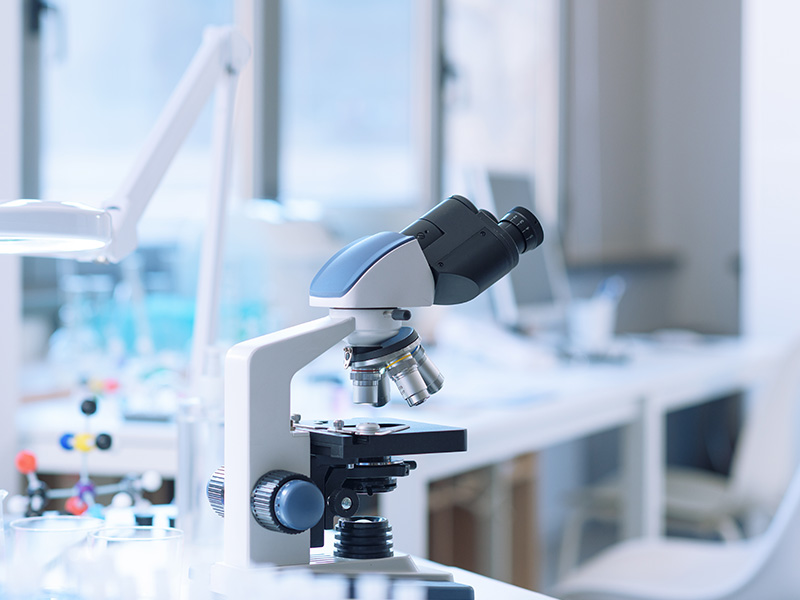Clinical Trial Phases: The Practical Approach to FDA Requirements

In the world of medical research and healthcare advancements, the phases of clinical trials are vital to the process of developing new treatments that improve patient care and health outcomes. For a new treatment to come to market, companies must prove that it is safe and effective by completing a set of FDA clinical trial phases as mandated by the Food and Drug Administration (FDA). For those unfamiliar, the United States Food and Drug Administration is responsible for overseeing the approval process of drugs, therapies, and medical devices, and has a rigorous set of health requirements in place for each phase of development that companies must meet before a treatment is approved. To ensure compliance with the law, read on to find an in-depth look at clinical trial phases and their FDA requirements.
What Does The Term “Phases” Refer to Within Clinical Trials?
A phase in a clinical trial is an individual stage in which potential treatments are tested to assess their safety, efficacy, and effectiveness. Each phase requires different objectives to be met, depending on the goal of the treatment and its intended use for health conditions. The progression of phases is based on the maturity of the treatment being studied, as well as, its potential risks to participants. The FDA requires that each clinical trial phase is completed in succession, with each phase building on the findings of the last. For a new treatment to be approved by the FDA, it must successfully pass through Phases I, II, and III before the public has access to it. With this said, the next section will specifically look at all clinical trial phases in detail.
Clinical Trial Phases Explained: Purpose, Participants, & FDA Requirements
Before we jump into the phases of FDA clinical trials, let’s touch briefly on what a pre-clinical study is, and what it involves.
Pre-Clinical Study
Pre-clinical studies are typically conducted by pharmaceutical companies or other research organizations in order to assess the safety and efficacy of a new candidate drug, medical device, or vaccine. In the pre-clinical phase, a scientific researcher tests the treatment on model organisms (never humans) either in vitro (test tube or cell structures) or in vivo (animal model), and uses wide-ranging doses of the study agent to look for basic features like efficacy, toxicity, and how it interacts with different systems in the body (pharmacokinetics). The purpose of a pre-clinical study is to decide whether the treatment looks promising enough for further development. While pre-clinical trials are not required by FDA regulations, they can help provide valuable insight into a new treatment before it moves onto the next clinical trial phase.
Phase 0 Clinical Trials
Phase 0 clinical trials, sometimes called human microdosing studies, are small-scale exploratory trials that involve a very limited number of participants, typically no more than 15. The primary purpose of phase 0 clinical trials is to determine if a drug works in humans, and to assess its oral bioavailability, and half life. In terms of methodology, these studies use a very low dose of the candidate drug, administer it once or twice, and observe how the body responds. The FDA has specific requirements for these trials, which include obtaining permission through the United States Food and Drug Administration’s (FDA) Investigational New Drug (IND) program, and approval from an Institutional Review Board (IRB). Phase 0 clinical trials can be helpful in enabling researchers to make go/no-go decisions based on relevant human models instead of relying on inconsistent animal data.
Phase 1 Clinical Trials
The main objective of phase 1 clinical trials is to evaluate the safety and effectiveness of a new drug or therapy in human participants. This involves testing a small number of healthy individuals, between 20-100, to identify what the side effects are, what the best dose and formulation is, and if adverse events occur. Examples of adverse events in this phase include things like disability, permanent damage, heart attack or birth defect that may be caused by the treatment. The clinical researcher will study how the treatment works within the body, and where it gets distributed throughout the body. Before a phase 1 clinical trial can begin, the sponsor must submit an Investigational New Drug application to the FDA that outlines all preliminary data gathered in the pre-clinical phase.
How Are Phase 1 Clinical Trials Run?
These trials are often conducted by contract research organizations (CROs) on behalf of pharmaceutical companies. While healthy volunteers are usually the first participants in these studies, in some cases, clinical patients like individuals who have terminal illnesses may be enrolled if they have already tried all existing standard therapies. All participants are monitored under 24-hour medical supervision within tightly controlled Central Pharmacological Units (CPUs), while they receive multiple doses over an extended period.
What Is Dose-Ranging & Dose Escalation Within Phase 1 Clinical Trials?
Determining the right dosage for a drug or therapy is an essential part of phase 1 clinical trials. This process involves two components – dose ranging and dose escalation.
- Dose ranging is used to identify the ideal level of a treatment that will produce therapeutic effects without any severe side effects. By testing out different levels, researchers can determine which dose is best suited for further trials.
- While dose escalation, involves identifying the maximum tolerated dose that can be safely administered. This entails gradually increasing the amount until it reaches its peak, in order to ensure safety throughout the process.
Phase 1 Clinical Trials: Single Ascending Dose vs. Multiple Ascending Dose
To further clarify on how dosing works, there are generally two accepted strategies in phase 1 clinical trials, called single ascending dose and multiple ascending dose.
- With single ascending dose studies, a small subset of participants within the trial (3) are given a single dose of the drug in sequential order and monitored over a period of time to watch for adverse side effects. If no side effects are exhibited, and the pharmacokinetic data is in line with projected safe values, then a new group of subjects is given a higher dose. If these participants are observed with unacceptable toxicity levels, then another subset of participants is given the same dose – this process repeats until pre-calculated safety levels are reached or until intolerable side effects show. If and when additional toxicity is observed, researchers declare that dose or the one prior to it, as the maximum tolerated dose (MTD).
- With multiple ascending dose studies, the process is similar, but a small group of participants within the study will receive multiple, low doses of the treatment and then have samples of their blood and other fluids taken and analyzed over a long period of time. The purpose of this is to acquire information on how the body processes the drug, and to investigate the safety and tolerability of it. The doses are subsequently escalated up to a predetermined level.
At the end of a phase 1 clinical trial, all information must be collected, analyzed, and submitted to the FDA for approval, before the trial can move into phase 2. If the treatment results show 1 or more adverse side effects, the FDA may not give permission to proceed, and if that happens the treatment is either discontinued or drops out of market eligibility. If the treatment meets primary outcomes as defined in the initial study design, the FDA may permit the treatment to proceed.
Phase 2 Clinical Trials
Once a treatment has been given the green light to move into phase 2 clinical trials, a much larger group of participants – between 100-300 – with a particular disease are recruited. These trials are intended to measure the efficacy and side effects, and to gather more data on how the body processes a therapeutic dosage of the treatment.
The main difference between a phase 1 clinical trial and a phase 2 clinical trial, beyond the scope, is that phase 1 clinical trials often use low doses, while a phase 2 clinical trial will use a therapeutic dose. Beyond this, phase 2 clinical trials are randomized, and controlled, often including two groupings of patients – one who receives the new treatment, and one who receives either the current standard of care, another treatment already available, or a placebo (sugar pill or harmless injection).
The primary outcome in phase 2 clinical trials is based on the effectiveness of the experimental treatment or drug and its ability to reduce symptoms or improve survival rate. The FDA is looking to see if the treatment results show that the experimental treatment worked better than the current standard of care. If it did not, or caused an acceleration of the disease or unexpected adverse side effects, the FDA is unlikely to give permission to proceed to a phase 3 clinical trial. Historically, phase 2 clinical trials experienced the lowest success rate out of the 4 phases of FDA clinical trials.
What Is a Phase 3 Clinical Trial?
If a treatment has successfully passed the phase 2 clinical trial, it then moves into phase 3 clinical trials. This is the largest, longest and the most expensive of the FDA clinical trial phase, with recruitment being between 300-3,000 volunteers with a particular condition or disease. The aim of a phase 3 clinical trial is to further validate the efficacy, effectiveness, and safety of the treatment before it’s put on the market. This is done by determining the drug’s therapeutic effect, how it measures against existing treatments, and looking at the overall long-term safety issues, by comparing it with the best treatments that currently exist (standard treatment).
FDA requirements for a phase 3 clinical trial requires the treatment to prove that it is ‘equally effective’, meaning it works as well as or better than existing treatments. The FDA must also determine the side effects of the treatment, and how it affects quality of life for those using it. Typically, at this point, the company will have to apply for a New Drug Application (NDA) which discloses all discoveries made throughout every phase to the FDA, who then takes the necessary time to assess the data. The FDA may request additional trials or measures to be taken before approving the drug for mass consumption. In some cases, the FDA will require two successful phase 3 clinical trials to demonstrate a treatment’s safety and efficacy, before it’s approved.
What Are Phase 4 Clinical Trials?
A phase 4 clinical trial is conducted after approval by the FDA, while the treatment is being marketed to patients. It’s also known as post-marketing surveillance studies, and its purpose is to track any long-term effects of the treatment, as the FDA requires drugmakers to report any unexpected adverse events and outcomes that were not seen in the earlier stages of clinical trials. The FDA has publicly available tools like MedWatch, which allows health professionals, sponsors, and patients to report serious adverse events that they believe are associated with the specific treatment.
This phase helps to identify any rare side effects, or long term consequences, that may not have been seen in the shorter clinical trial phases. The information collected during this stage of the process can be used to refine labeling and packaging information, inform physicians on how best to use the drug in patients, and to monitor the drug’s safety profile. If harmful effects are found during a phase 4 clinical trial, this may result in the treatment being withdrawn from the market entirely, or restricted to specific use cases.
Wrapping It Up
Clinical trials are a complex but necessary process for treatments to become available and safe for public use. The 4 phases of FDA clinical trial requirements ensure that only the safest, most effective treatments make it onto the market. Each phase has its own unique set of criteria and aims which must be met in order to progress further into development. From initial safety testing through long-term effects tracking, these steps serve as essential quality control measures when it comes to bringing new treatments from research labs into patient care settings. If you would like help navigating each step of this journey or need support with your specific project needs, contact Conquest Research today! Our team is ready and waiting to partner with you on any stage of your treatment’s clinical trial process.
Sign Up For A Study
CURRENT STUDIES
Conquest Research is continuously looking for participants to take part in clinical research trials for various medical conditions.












